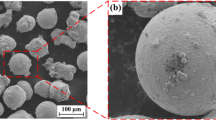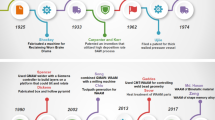Abstract
Due to the machining-induced residual stress while processing, the machining distortion of thin-walled 7050 aluminum alloy parts occurs easily, which greatly affects the pass rate of the products. Herein, electromagnetic coupling treatment (EMCT) was proposed to relieve the residual stress of 7050 aluminum alloy. It was found that EMCT had a significant effect on residual stress relief (13.3–89.7%). The energy input by EMCT promoted the movement of dislocation, resulting in the uniform distribution of microplastic strain, the release of stored elastic strain energy, and the residual stress relief, ultimately. A numerical simulation method to visualize the evolution of the electromagnetic field, the stress, and the strain in the materials was proposed to explain the causes of microplastic strain. Specimen #5 with the optimal EMCT processing parameter (1.5 T, 1.5 V) was considered to be the most effective for both residual stress relief and mechanical property enhancement, in which the residual stress decreased by 85.1% and the tensile strength increased by 8.3%. In this paper, it is proposed that EMCT can be used as an effective method to reduce the residual stress of 7050 aluminum alloy. Moreover, it has certain technical reference value for the study of residual stress relief of other thin-walled part materials.
Graphical abstract













Similar content being viewed by others
Data availability
Data (images and measurement files) supporting the findings of this study are available from the corresponding author, K. Huang, upon reasonable requests.
References
Dursun T, Soutis C (2014) Recent developments in advanced aircraft aluminium alloys. Mater Des 1980–2015(56):862–871. https://doi.org/10.1016/j.matdes.2013.12.002
Zhang L, Li H, Bian T, Wu C, Gao Y, Lei C (2022) Advances and challenges on springback control for creep age forming of aluminum alloy. Chin J Aeronaut 35:8–34. https://doi.org/10.1016/j.cja.2021.10.019
Chabeauti H, Ritou M, Lavisse B, Germain G, Charbonnier V (2022) Numerical investigation and modeling of residual stress field variability impacting the machining deformations of forged part. Procedia CIRP 108:687–692. https://doi.org/10.1016/j.procir.2022.04.079
Denkena B, Leon LD (2008) Milling induced residual stresses in structural parts out of forged aluminium alloys. Int J Mach Mach Mater 4:335. https://doi.org/10.1504/IJMMM.2008.023717
Denkena B, Boehnke D, de León L (2008) Machining induced residual stress in structural aluminum parts. Prod Eng 2:247–253. https://doi.org/10.1007/s11740-008-0097-1
Song H, Gao H, Wu Q, Zhang Y (2021) Effects of segmented thermal-vibration stress relief process on residual stresses, mechanical properties and microstructures of large 2219 Al alloy rings. J Alloys Compd 886:161269. https://doi.org/10.1016/j.jallcom.2021.161269
Li Y, Gan W, Zhou W, Li D (2022) Review on residual stress and its effects on manufacturing of aluminium alloy structural panels with typical multi-processes. Chin J Aeronaut S1000936122001571. https://doi.org/10.1016/j.cja.2022.07.020
Li J, Wang S (2017) Distortion caused by residual stresses in machining aeronautical aluminum alloy parts: recent advances. Int J Adv Manuf Technol 89:997–1012. https://doi.org/10.1007/s00170-016-9066-6
Perić M, Tonković Z, Rodić A, Surjak M, Garašić I, Boras I, Švaic S (2014) Numerical analysis and experimental investigation of welding residual stresses and distortions in a T-joint fillet weld. Mater Des 53:1052–1063. https://doi.org/10.1016/j.matdes.2013.08.011
Dong Y, Shao W, Jiang J, Zhang B, Zhen L (2015) Minimization of residual stress in an Al–Cu alloy forged plate by different heat treatments. J Mater Eng Perform 24:2256–2265. https://doi.org/10.1007/s11665-015-1505-2
Chen G, Xiu Z, Yang W, Jiang L, Wu G (2010) Effect of thermal-cooling cycle treatment on thermal expansion behavior of particulate reinforced aluminum matrix composites. Trans Nonferrous Met Soc China 20:2143–2147. https://doi.org/10.1016/S1003-6326(09)60432-5
Zhang Y, Yi Y, Huang S, Dong F (2016) Influence of quenching cooling rate on residual stress and tensile properties of 2A14 aluminum alloy forgings. Mater Sci Eng A 674:658–665. https://doi.org/10.1016/j.msea.2016.08.017
Gong H, Sun Y, Liu Y et al (2018) Effect of vibration stress relief on the shape stability of aluminum alloy 7075 thin-walled parts. Metals 9:27. https://doi.org/10.3390/met9010027
Gao H, Zhang Y, Wu Q, Song J, Wen K (2018) Fatigue life of 7075–T651 aluminium alloy treated with vibratory stress relief. Int J Fatigue 108:62–67. https://doi.org/10.1016/j.ijfatigue.2017.11.011
Ghiotti A, Bruschi S, Simonetto E et al (2018) Electroplastic effect on AA1050 aluminium alloy formability. CIRP Ann 67:289–292. https://doi.org/10.1016/j.cirp.2018.04.054
Pan L, He W, Gu B (2016) Effects of electric current pulses on mechanical properties and microstructures of as-quenched medium carbon steel. Mater Sci Eng A 662:404–411. https://doi.org/10.1016/j.msea.2016.03.031
Pan L, He W, Gu B (2015) Non-uniform carbon segregation induced by electric current pulse under residual stresses. J Mater Process Technol 226:247–254. https://doi.org/10.1016/j.jmatprotec.2015.07.017
Pan L, Wang B, Xu Z (2019) Effects of electropulsing treatment on residual stresses of high elastic cobalt-base alloy ISO 5832–7. J Alloys Compd 792:994–999. https://doi.org/10.1016/j.jallcom.2019.04.091
Xiang S, Zhang X (2020) Residual stress removal under pulsed electric current. Acta Metall Sin Engl Lett 33:281–289. https://doi.org/10.1007/s40195-019-00941-z
Klamecki BE (2003) Residual stress reduction by pulsed magnetic treatment. J Mater Process Technol 141:385–394. https://doi.org/10.1016/S0924-0136(03)00387-X
Lu AL, Tang F, Luo XJ, Mei JF, Fang HZ (1998) Research on residual-stress reduction by strong pulsed magnetic treatment. J Mater Process Technol 74:259–262. https://doi.org/10.1016/S0924-0136(97)00280-X
Tang F, Lu AL, Mei JF, Fang HZ, Luo XJ (1998) Research on residual stress reduction by a low frequency alternating magnetic field. J Mater Process Technol 74:255–258. https://doi.org/10.1016/S0924-0136(97)00279-3
Shao Q, Kang J, Xing Z et al (2019) Effect of pulsed magnetic field treatment on the residual stress of 20Cr2Ni4A steel. J Magn Magn Mater 476:218–224. https://doi.org/10.1016/j.jmmm.2018.12.105
Zhong F, Wang J, Zhang Q et al (2022) Residual stress reductions of carbide cutting tools through applying pulsed magnetic field and coupled electromagnetic field-mechanism analysis and comparison study. Int J Adv Manuf Technol 121:4757–4775. https://doi.org/10.1007/s00170-022-09434-3
Xu J, Huang L, Xu Y et al (2022) Effect of pulsed electromagnetic field treatment on dislocation evolution and subsequent artificial aging behavior of 2195 Al–Li alloy. Mater Charact 187:111872. https://doi.org/10.1016/j.matchar.2022.111872
Cai Z, Huang X (2011) Residual stress reduction by combined treatment of pulsed magnetic field and pulsed current. Mater Sci Eng A 528:6287–6292. https://doi.org/10.1016/j.msea.2011.04.078
Yuan M, Wang J, Wang L et al (2021) Electromagnetic coupling field strengthening of WC-TiC-Co cermet tools. Ceram Int 47:3747–3759. https://doi.org/10.1016/j.ceramint.2020.09.232
Zhang Q, Huang K, Wang J et al (2021) Effect of pulse electromagnetic coupling treatment on thermal conductivity of WC-8Co cemented carbide. Ceram Int 47:22683–22692. https://doi.org/10.1016/j.ceramint.2021.04.283
Zhang Q, Wang X, Qin Y et al (2022) Improving thermal conductivity of a nickel-based alloy through advanced electromagnetic coupling treatment. J Mater Res Technol 21:4708–4723. https://doi.org/10.1016/j.jmrt.2022.11.066
Wang L, Yuan M, Li Y et al (2020) Cutting mechanism of WC-8Co cemented carbide for dry turning of Ti6Al4V before and after pulsed electromagnetic coupling processing. Rare Met Mater Eng 49:4016–4022
Han NM, Zhang XM, Liu SD et al (2011) Effect of solution treatment on the strength and fracture toughness of aluminum alloy 7050. J Alloys Compd 509:4138–4145. https://doi.org/10.1016/j.jallcom.2011.01.005
Carvalho ALM, Renaudin LB, Zara AJ, Martins JP (2022) Microstructure analysis of 7050 aluminum alloy processed by multistage aging treatments. J Alloys Compd 907:164400. https://doi.org/10.1016/j.jallcom.2022.164400
Hou M, Li K, Li X et al (2020) Effects of pulsed magnetic fields of different intensities on dislocation density, residual stress, and hardness of Cr4Mo4V steel. Crystals 10:115. https://doi.org/10.3390/cryst10020115
Xiong H, Zhou Y, Yang P, Kong C, Yu H (2022) Effects of cryorolling, room temperature rolling and aging treatment on mechanical and corrosion properties of 7050 aluminum alloy. Mater Sci Eng A 853:143764. https://doi.org/10.1016/j.msea.2022.143764
Zhang X, Zhao Q, Cai Z, Pan J (2020) Effects of magnetic field on the residual stress and structural defects of Ti–6Al–4V. Metals 10:141. https://doi.org/10.3390/met10010141
Shi L, Zou J, Sun L et al (2022) Effect of electropulsing treatment on microstructure and mechanical properties of Cu–20Ni–20Mn alloy. Mater Sci Eng A 855:143847. https://doi.org/10.1016/j.msea.2022.143847
Zhang JB, Zhang YA, Zhu BH, Liu RQ, Wang F, Liang QM (2013) Characterization of microstructure and mechanical properties of Al–Cu–Mg–Ag–(Mn/Zr) alloy with high Cu:Mg. Mater Des 49:311–317. https://doi.org/10.1016/j.matdes.2013.01.044
Kamaya M, Wilkinson AJ, Titchmarsh JM (2005) Measurement of plastic strain of polycrystalline material by electron backscatter diffraction. Nucl Eng Des 235:713–725. https://doi.org/10.1016/j.nucengdes.2004.11.006
Fujiyama K, Mori K, Kaneko D, Kimachi H, Saito T, Ishii R, Hino T (2009) Creep damage assessment of 10Cr-1Mo-1W-VNbN steel forging through EBSD observation. Int J Press Vessels Pip 86:570–577. https://doi.org/10.1016/j.ijpvp.2009.04.011
Liu H, Zheng J, Guo Y, Zhu L (2020) Residual stresses in high-speed two-dimensional ultrasonic rolling 7050 aluminum alloy with thermal-mechanical coupling. Int J Mech Sci 186:105824. https://doi.org/10.1016/j.ijmecsci.2020.105824
Gumbmann E, Lefebvre W, De Geuser F, Sigli C, Deschamps A (2016) The effect of minor solute additions on the precipitation path of an Al Cu Li alloy. Acta Mater 115:104–114. https://doi.org/10.1016/j.actamat.2016.05.050
Rahimi S, King M, Dumont C (2017) Stress relaxation behaviour in IN718 nickel based superalloy during ageing heat treatments. Mater Sci Eng A 708:563–573. https://doi.org/10.1016/j.msea.2017.09.116
Alshits VI, Darinskaya EV, Koldaeva MV, Petrzhik EA (2008) Magnetoplastic effect in nonmagnetic crystals. In: Dislocations in solids. Elsevier, pp 333–437
Wu S, Zhao H, Lu A, Fang H, Tang F (2003) A micro-mechanism model of residual stress reduction by low frequency alternating magnetic field treatment. J Mater Process Technol 132:198–202. https://doi.org/10.1016/S0924-0136(02)00915-9
Zhuang WZ, Halford GR (2001) Investigation of residual stress relaxation under cyclic load. Int J Fatigue 23:31–37. https://doi.org/10.1016/S0142-1123(01)00132-3
Sprecher AF, Mannant SL, Conrad H (1986) On the mechanisms for the electroplastic effect in metals. Acta Metall 34:1145–1162. https://doi.org/10.1016/0001-6160(86)90001-5
Poole WJ, Ashby MF, Fleck NA (1996) Micro-hardness of annealed and work-hardened copper polycrystals. Scr Mater 34:559–564. https://doi.org/10.1016/1359-6462(95)00524-2
Acknowledgements
The authors wish to acknowledge the financial support by the AVIC Independent Innovation Special Fund Project (Nos. ZZCX-2022-036 and ZZCX-2021-031) and the Sichuan Science and Technology Program (No. 2021ZDZX0002). We would like to appreciate the Analytical and Testing Center of Sichuan University for structural characterization work, and we would be grateful to Yong Liu for her help with SEM analysis.
Author information
Authors and Affiliations
Contributions
LA contributed to investigation, data curation, formal analysis, and writing original manuscript. ZX contributed to resources, investigation, conceptualization, experimental design, and formal analysis. HS contributed to investigation, data curation, and numerical simulation and analysis. JW contributed to resources, writing review, and editing manuscript. KH contributed to resources, supervision, validation, writing reviews, and editing.
Corresponding author
Ethics declarations
Conflict of interest
The authors declare that they have no known competing financial interests or personal relationships that could have appeared to influence the work reported in this paper.
Ethical approval
Not applicable.
Additional information
Handling Editor: Catalin Croitoru.
Publisher's Note
Springer Nature remains neutral with regard to jurisdictional claims in published maps and institutional affiliations.
Rights and permissions
Springer Nature or its licensor (e.g. a society or other partner) holds exclusive rights to this article under a publishing agreement with the author(s) or other rightsholder(s); author self-archiving of the accepted manuscript version of this article is solely governed by the terms of such publishing agreement and applicable law.
About this article
Cite this article
Ashi, L., Xie, Z., Sun, H. et al. Effect of electromagnetic coupling treatment on the residual stress relief and mechanical properties of 7050 aluminum alloy. J Mater Sci 58, 12097–12117 (2023). https://doi.org/10.1007/s10853-023-08775-y
Received:
Accepted:
Published:
Issue Date:
DOI: https://doi.org/10.1007/s10853-023-08775-y




